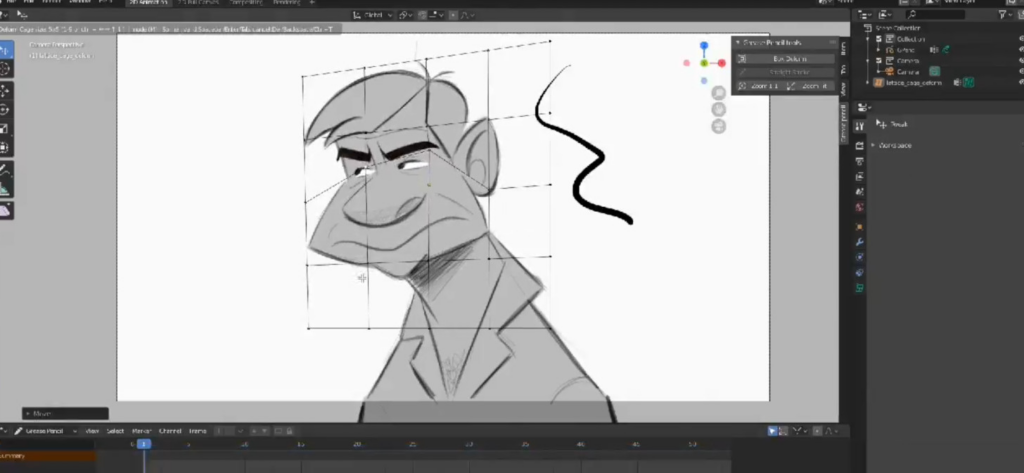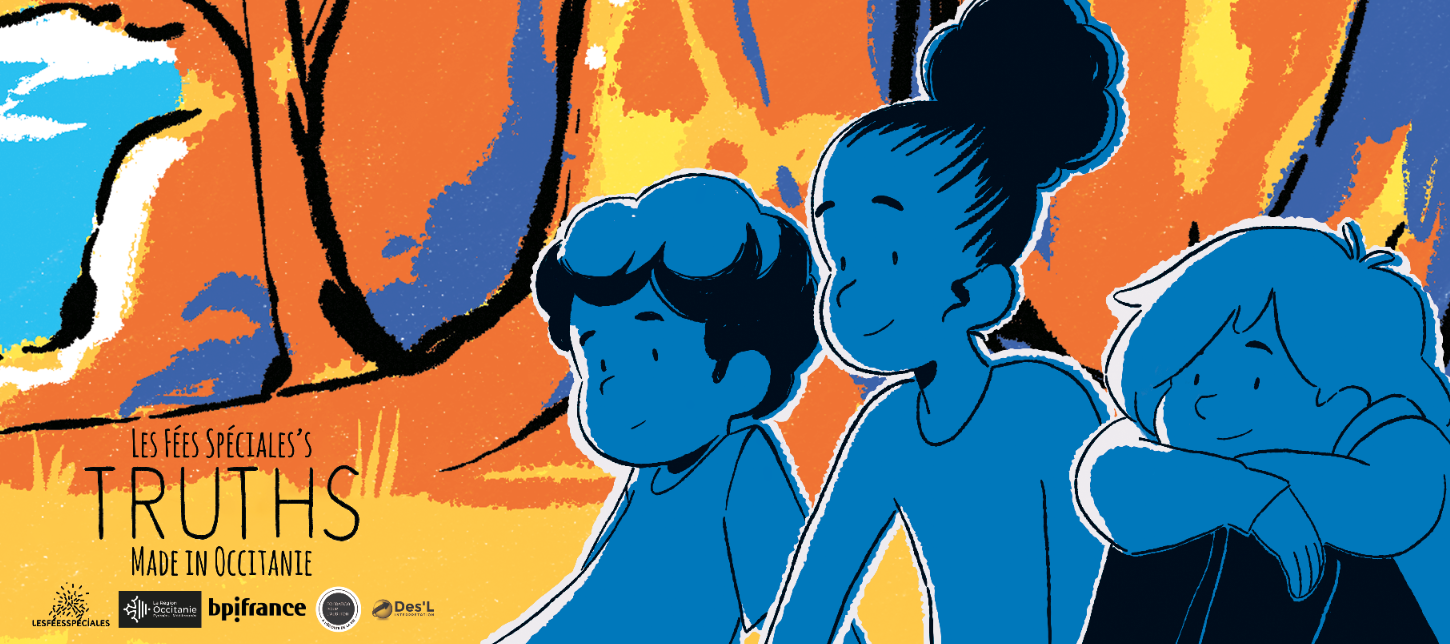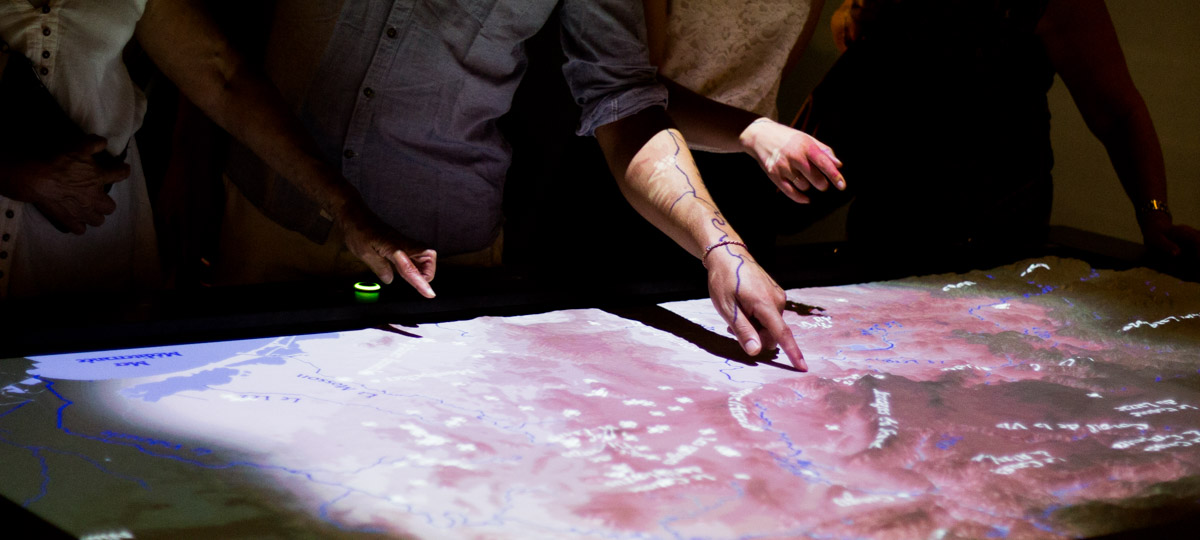This year, we had the pleasure of being able to present some of our latest research at the Blender Conference 2023. Amélie Fondevilla and Flavio Perez showcased two scenes that serve all aspects of Research and Development around Grease Pencil, Blender software’s 2D animation tool. These two scenes are freely available as open scenes (Creative Commons CC BY sharing license) for study by other research labs or for anyone curious to see the production steps.

Grease Pencil is this great module for 2D animation within the open source 3D application Blender. When you download Blender, Grease Pencil is included. It’s already a wonderful tool, but it can be greatly improved with some add-ons. In this article we will list the ones we use, what they are good for and where to grab them. We will also explain why they are not included in blender, and offer you an option to install and update them all easily. Let’s go!
Read moreThis article exists in French / Cet article existe en français
During 2020 and 2021 (during covid lockdowns), we created a maintained the whole pipeline for the feature film The Siren (by Sepideh Farsi). 8 studios where involved, and Blender was a the core of the pipeline. In this talk, made during the last Blender Conference 2022, you can discover the pipeline and workflow, the huge pile of free and open source technologies used to make this 1800+ shots movie.
This year, Grease Pencil, the blender module to make 2D animations, was part of many talks at the 2022 Blender Conference. From shorts to feature films, the Grease Pencil is trending. In this article we’ll share some notes on this topic and on the promising future of Grease Pencil.
Before going through the conference, here is the Grease Pencil demo reel 2022, as edited by Daniel Martinez Lara and now part of the Blender official youtube Channel

This year we produced a 2-minute pilot episode using Blender 2.8 and the Grease Pencil. It’s our company Les Fées Spéciales’ first production in its own name, and we presented it last september in the biggest European pitching platform, the Cartoon Forum. In this article we cover where this project comes from and why we are doing it; how we switched to the Grease Pencil to handle the production process and what the future of the project is. We are thrilled to be able to talk about it.
Note that for a change, it’s not really a technical article, but more of a production making-of of that pilot.
Welcome to the blog of the technical department of Les Fées Spéciales, a French animation studio.
We decided to create this blog to share technical thoughts and tools. Feel free to ask us if you want to know something specific about how we work, or if you are interested in writing and sharing how you work within your company contact us at la-cuisine [at] les-fees-speciales [dot] coop. Guest articles are welcome here!
We also invite you to visit the RESOURCES page, list of meaningful content covering our area of topics.
The stack of solutions used within a studio is an important part of the technological ecosystem of a company. That stack is a living thing, changing quite a lot. Some solutions were only used within a project and are now discarded. Others are still used despite being old versions. And it might be hard to make an accurate and full description.
Yet, we can describe broadly what’s currently used at Les Fées Spéciales. As you will see, it’s mostly free and open source software, but not exclusively. And nothing too fancy! Operating systems, communication, DCCs, web stuff and programming solutions: here goes the list as of 2019!
When starting to work as a group, it’s essential to share files. There are many ways to do it, like using a shared space, or using a cloud solution and grabbing what you need to work. Whichever you choose, you will need to have backups of everything, and this article focuses on the importance of backup. This applies to individuals too, of course.
In this post we explore two ways to run a python script from Photoshop providing arguments (like the Photoshop file name). Those simple scripts helped us create complex behaviours to process results of Photoshop scripts for the Set department of the feature film Dilili in Paris or in our recent project for the Lodève Museum. The background artists could work in Photoshop and start those procedures without exciting software. Using such scripts to push previews to the production manager software, moving files, starting a blender playblast to get a preview of the updated scene, etc. Saving a lot of time.
When dealing with shots, it’s important to get a continuity check. It means the ability to see those shots together to preview them as a sequence.
It can happen at any time during the whole process, from the layout (to check if a shot’s framing and timing are working well within the sequence) or during the animation (to check if the motion continuity and rhythm work), to the compositing (to check if the colours or effects match between shots).
We could use our favourite video editing software (from Blender VSE to Premiere, Avid, etc.), or dedicated software like DaVinci Resolve or the expensive Nuke Studio. But you might not have a license or you might want something lighter than opening such a big app, looking for the project and loading it. For that, big studios often have their own sequence player or rely on an extensive use of Tweak’s RV, an expensive but powerful video player. Let’s see what we can do with free software.
This article is not technical, it’s about the process to find a solution.
In january 2017 we started working on the ambitious reopening of the Musée de Lodève, Lodève’s museum, a small town in the south of France. The project was already years in the making, and we jumped onboard to create more than an hour of movies for the three main themes: Geology (540 millions years of life and tectonics), Archaeology and Beaux-Arts (fine arts). In the near future we will be releasing some tools and making of made for that production. In the meantime, allow us to introduce the project and the grand opening which took place early July. Nothing technical for now, but the production background of that project which took us so much energy.

This article is available in French on the studio’s website / Cet article est disponible en français sur le site web du studio.
Dear Visitor, the Technical Department wish you a happy new year!
And this incoming year is a very exciting for a lot of reasons!
Let’s start in terms of projects for us. Next October will be released the feature film Dilili in Paris for which we worked hard for the past two years. Hopefully you will see it in festivals before then. And you’ll have more articles about that production soon.
This summer will be seen the opening of a very nice archeology and geology museum. The museum is located in Lodève, next to Montpellier in France. We are currently creating more than 45 minutes of animation, interactive programs, and multiple 3D reconstructions for the museum. It’s improving a lot our tools, methods and pipeline and we will share more on that too, later this year.
And we have other nice projects. So we are very busy, but we have a lot of things to share along those works, so stay tuned.
But it’s not only about us, it’s about huge releases in free software too!
In a previous article we shared our way of organizing the files. In this one, we’ll introduce you to the use of a simple python library called Lucidity, very useful to start handling your project naming conventions. The aim is to quickly check if your file paths are correct, or build paths from a set of variables, without coding your own parser.
We attended the 15th Blender Conference and it was a blast! Every year we gather so much energy and ideas during those 4 days. Kudos to the organizers for this hard work. And this year we were invited to present part of our work on the feature film Dilili in Paris.
Damien took 20 minutes to present the solutions we had to develop to handle this 90 minutes feature film. And more particularly, the creation of the 500 characters needed to populate the early 19th century Paris. Those characters were built using an old cut-out technique, like flat paper puppets but in a digital process. For more explanations, we’ll let you watch the talk, for which we were kindly authorized to show the very first shots of the movie, which is yet to be released in October 2018.
We will go back more in detail on the processes and other solutions we deployed in upcoming posts. Stay tuned!
We thought me might share thoughts around our file organization. Of course there are plenty of ways of organizing your work, and this is one of them. But it’s simple and complete enough to fit many animation projects. Before describing it we will start with generic tips and thoughts.